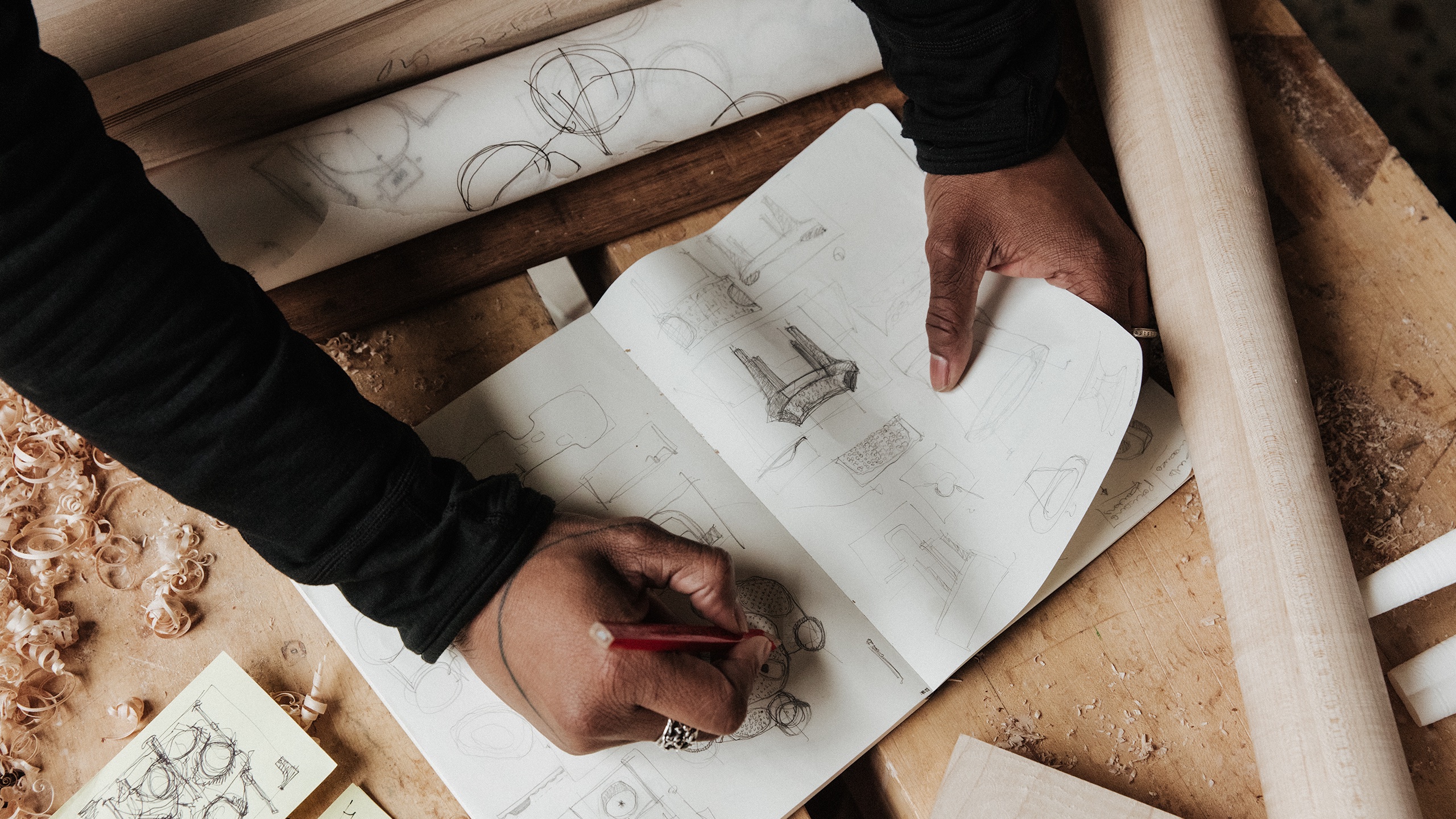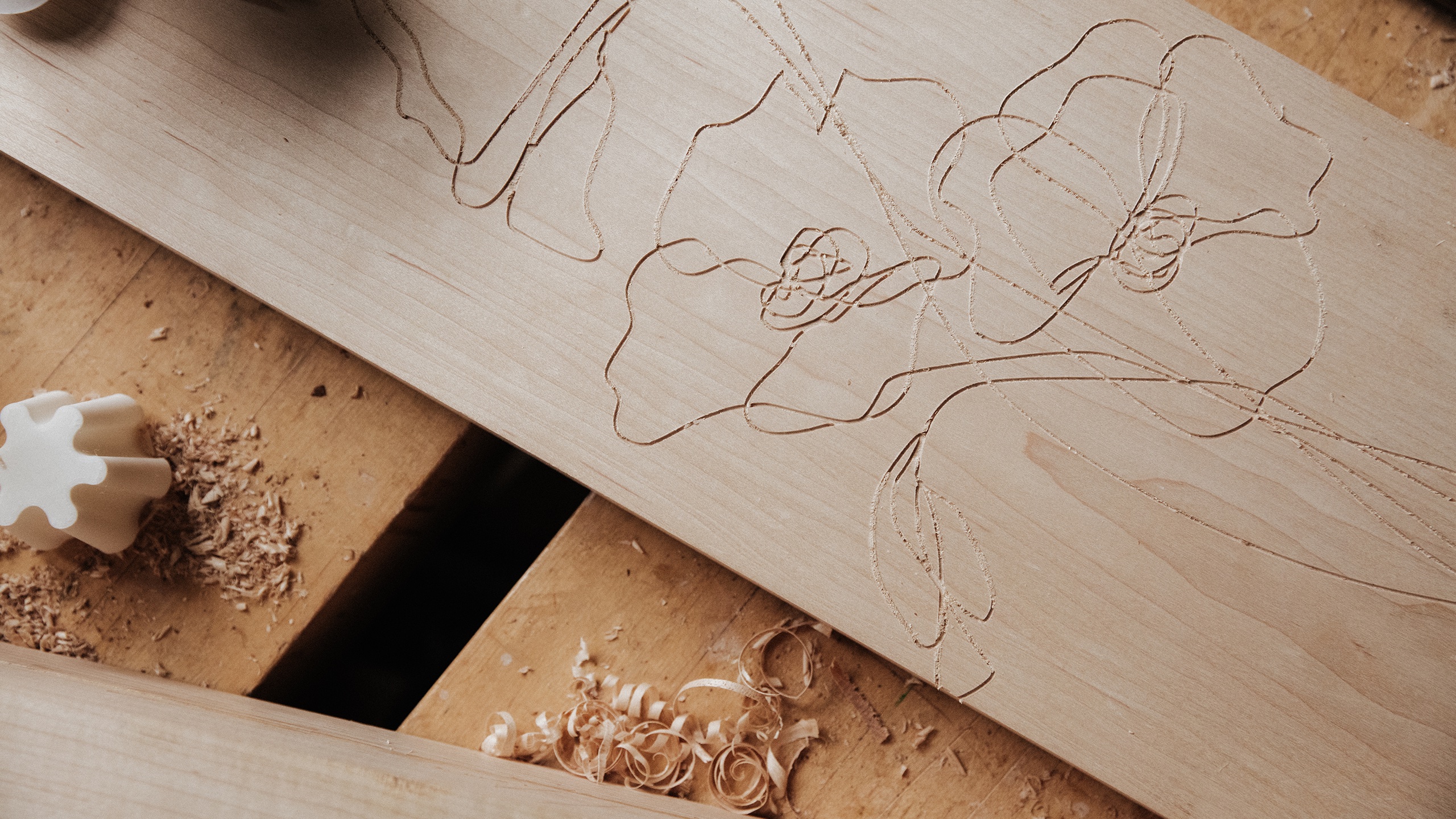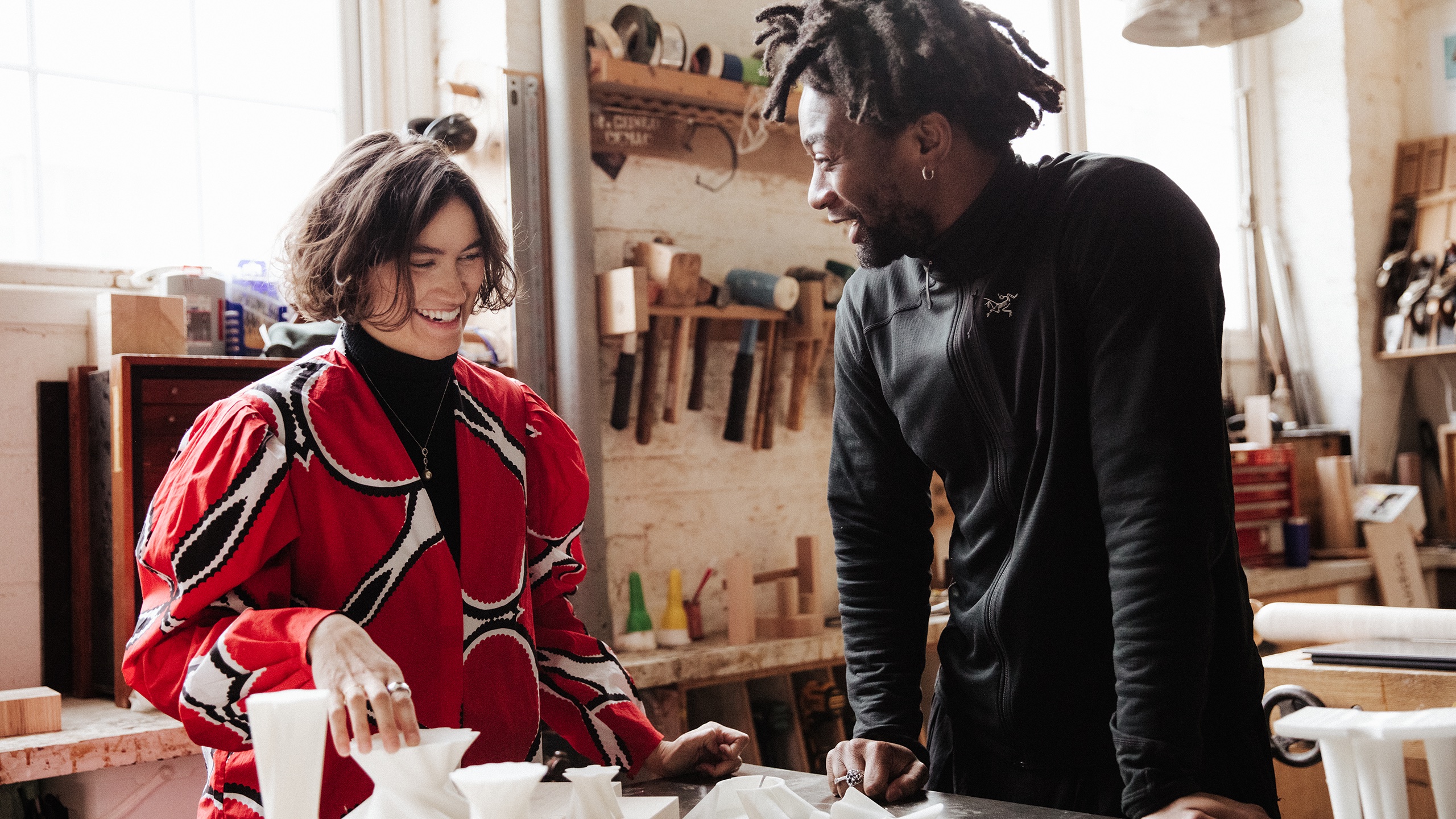At this year’s Salone del Mobile, AHEC shines the spotlight on maple – a valuable yet underused hardwood with a delicate colour and a beautifully fine grain.
Supported by AHEC and Jan Hendzel Studio, each has used maple as a material springboard to explore and experiment, creating two very different bodies of work from a common starting point.
“For us, it's about balancing traditional joinery methods with pushing the capabilities of digital machining. In these projects, we are celebrating the use of American maple, a beautiful creamy white, very hard, dense-grained timber, with an almost illustrative grain patterning. The challenge for us is in mastering how far we can push it.” – Jan Hendzel, founder, Jan Hendzel Studio

‘Communion’ by Giles Tettey Nartey
Making his Milan debut, the British-Ghanaian designer Giles Tettey Nartey is using the commission as an opportunity to explore culture, culinary tradition, and the rituals of domestic life in Ghana.
Created from maple, which is dense and durable, Communion is a table designed for the making of fufu – a West African staple food, which is made by pounding cassava into a dough. Nartey’s table reimagines this practice as a communal performance, in which everyone comes together in the shared act of making food.
His design features an outer table equipped with dents, grooves, bowls, and bumps to enhance the preparation and cooking process, while a central table is dedicated to serving and communal dining. Included within the design are mortars (woduro) and pestles (woma) for grinding cassava, along with seating inspired by both traditional Ashanti stools and typical kitchen stools found in Ghana.
British-Ghanaian designer Giles Tettey Nartey is using the commission as an opportunity to explore culture, culinary tradition, and the rituals of domestic life in Ghana.
Through its form, Communion aims to elevate the act of pounding cassava to the level of performance, one person pounding, another turning the mixture in an almost choreographed fusion of movement and sound that is akin to dance.
“Communion focuses on the rituals that bring to life the objects in our homes, presenting them not just as lifeless items filling our spaces but as artefacts rich with emotional and spiritual meaning, animated through our daily routines. For me it’s also a question of functionality, and whose functionality we admire and give space to. The piece celebrates a practice that is so local to West Africa presented in a new way which gives emphasis to the ‘communal’ by allowing multiple people to participate in the process of making fufu. The everyday local ritual is therefore transformed into performance, exposing the beauty I have always seen in everyday Ghanaian life.” – Giles Tettey Nartey, creative

‘Pirouette’ by Parti
Inspired by the fluid movement of fabric and the childlike joy of spinning around, Parti’s Pirouette collection is a range of timber furniture that explores complex geometric forms.
Translating the folds and creases of twisting and billowing fabric into the solid forms of seats and tables is a demanding and complicated process, usually associated with sculpture and the highest levels of craftsmanship. Collaborating with Jan Hendzel Studio, Parti has embarked on a journey of experimentation, pushing the boundaries of a three-axis CNC machine to sculpt the wood and develop the furniture.
“Hand-sculpting fabric out of heavy materials is something we’ve seen throughout history. At Parti, however, we are interested in utilising new technologies and processes, and pushing them to the limit. As a result, the making process is integral to the design, informing its boundaries. The final design is achieved through a process of negotiation between the expression of the piece and the process of making it. Although it would be easier to design a one-off, hand-crafted object, we wanted to push the limits of new technology to create a feasibly manufactured product.” – Eleanor Hill, director, Parti
Inspired by the fluid movement of fabric and the childlike joy of spinning around, Parti’s Pirouette collection is a range of timber furniture that explores complex geometric forms.
Maple’s density makes it especially suited to the creation of sculptural shapes through CNC cutting. Because the CNC machine cuts only one side of the wood, the forms are simplified, with each piece constructed from a series of complex shapes connected together, with top and bottom elements acting as ‘keys’ to lock everything together and sustain the furniture’s structure.
Running diagonal across the twisting timber ‘skirt’, the wood’s silky grain contributes to a sense of fluidity and motion within the pieces, which are tactile and dynamic, reminiscent of dancers frozen in the moment. Despite Pirouette’s intricate appearance, meticulous attention to detail ensures that the manufacturing process remains streamlined and efficient, allowing for a seamless blend of complexity and simplicity in each piece.

A call for material diversity
For AHEC, the principal goal of these collaborations is to bridge the gap between the design industry and the naturally regenerating forests that supply American hardwoods, and to call for a sustainable material-first design approach that is led by resource availability rather than trends.
To truly embrace sustainability, AHEC believes the industry must shift its paradigm towards a more holistic understanding of materials.
“The relentless pursuit of ever-changing trends has led to overexploitation of certain wood species, disregarding the rich diversity of natural resources available. Moreover, trends that prioritise flawless, uniform appearances incentivise practices that may compromise the integrity and resilience of forests and ecosystems.” – Rocio Perez-Inigo, director of communications, AHEC
To truly embrace sustainability, AHEC believes the industry must shift its paradigm towards a more holistic understanding of materials. This begins with integrating material choice into the initial stages of the design process, prioritising responsibly sourced, renewable natural materials and investing time and effort in learning and understanding their unique characteristics and potential. Rather than treating natural materials as like-for-like substitutes for man-made equivalents, design must recognise and celebrate their inherent qualities and imperfections as part of their charm and authenticity. By adopting this mindset and approach – as Parti and Giles Tettey Nartey have in this project – we can foster a more sustainable design ethos that respects and preserves the natural world while meeting the needs of contemporary design aesthetics.
Communion and Pirouette will be displayed as part of Class of ’24 by Wallpaper* at Triennale Milano, Viale Emilio Alemagna, 6, 20121 Milan, from 16 to 21 April.